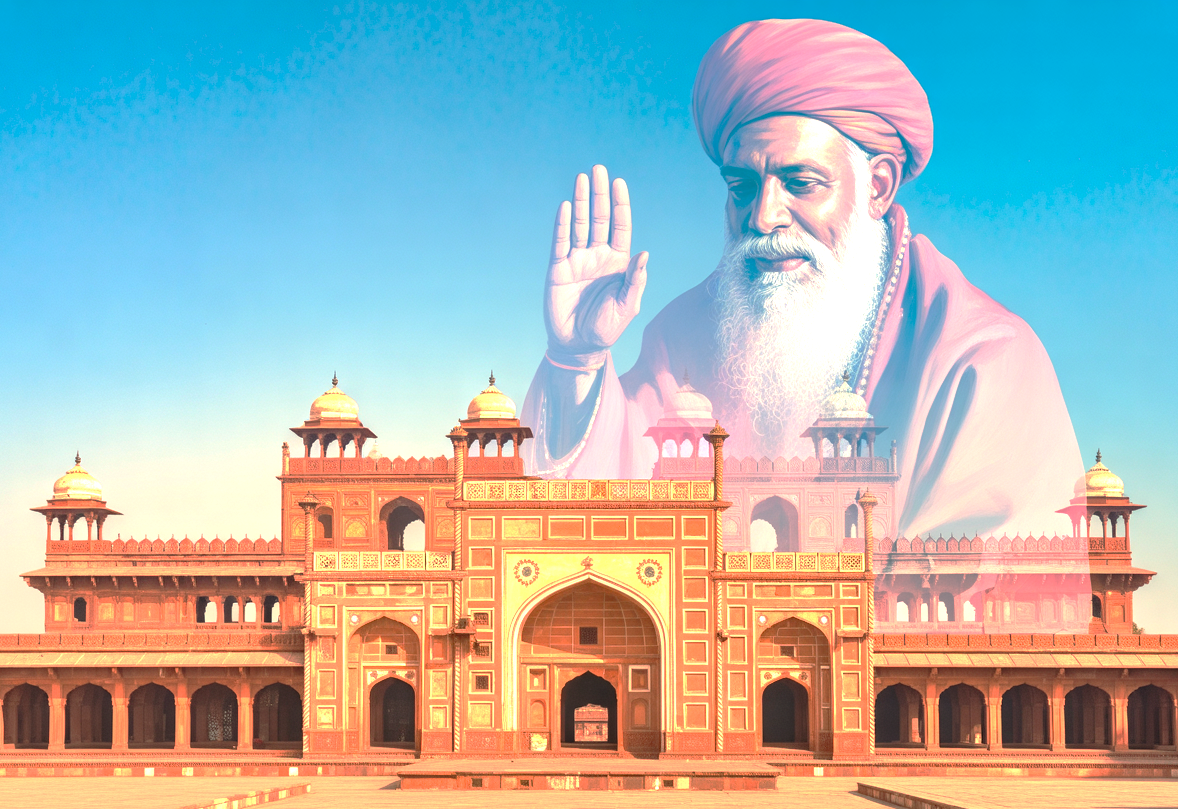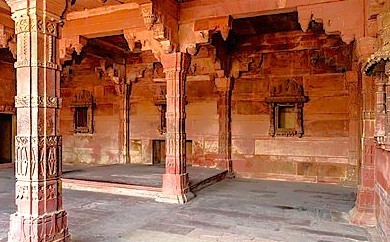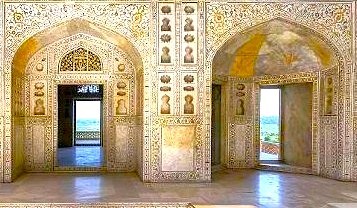Echoes of Ancient Lands
Fatehpur Sikri Fort Agra
Mother Masala Tours
A Testament to Mughal Royalty
Fatehpur Sikri Fort Agra. Established in 1571 by Emperor Akbar, serves as a historical marvel and a defining element of Mughal history in India. Located about 40 kilometers west of Agra, this city was built as a prosperous capital that reflected the glory and ambitions of its founder. The term "Fatehpur" translates to "City of Victory," commemorating Akbar's successful campaign in Gujarat. The construction of Fatehpur Sikri involved notable figures such as the famous architect Miyan Mir, who contributed significantly to the city’s design. At its height, the population consisted of various communities, including nobles, craftsmen, and merchants, all contributing to the economic and cultural richness of this imperial city. Today, with a population of around 20,000 in the surrounding area, Fatehpur Sikri is a Unesco World Heritage Site, preserving intricate details of Mughal Empire heritage and offering us a window into the past.

Fatehpur Sikri Fort Agra: Sacred Spaces
Renowned for its wealth of artifacts and sacred spaces that embody Mughal heritage. The complex includes several notable buildings, each telling a story of cultural and spiritual significance. The Jama Masjid, with its stunning red sandstone structure and exquisite marble inlays, serves as a key religious space for the local community. Another site is the Tomb of Sheikh Salim Chishti, which holds immense significance for devotees. Constructed in the 16th century, this tomb features beautifully carved marble and has become a pilgrimage site where many come to seek blessings, reflecting the harmonious blend of architecture and spirituality that characterizes the city.
Ancient Mosaics: Impeccable Craftsmanship

We will admire the fort's impressive artistry. Mughal era achievements are showcased here for us all to see. Detailed stone carvings highlight artisan skills throughout these grand structures. We especially note the intricate work found within the Jama Masjid. Red sandstone and smooth marble grace many parts of this fort. Their presence reveals great beauty and enduring strength for all to enjoy. We observe a wonderful blend of Persian and Indian architectural designs. This combination makes our experience unique and compelling.
The Pulse of the Local Community
Fatehpur Sikri Fort Agra. The community is known for its friendliness and deep respect for tradition. This stems from a rich historical backdrop where cultural exchanges have flourished for centuries. The locals are proud of their heritage, often sharing stories of the past that reflect the city's significance. During daylight, artisans craft sandstone souvenirs while merchants sell vibrant textiles in bustling markets. Women prepare meals in communal courtyards as children play among ancient ruins.
Capturing the Magic: A Photographic Haven

Grand gateways provide excellent opportunities for our pictures. We capture the intricate details found in many red sandstone structures. The bright white marble offers distinct contrast for our cameras. Inside, many palaces feature interesting architectural designs for us to observe. Large halls, known for unique pillars, create varied compositions. Five-storied buildings also present appealing chances for taking pictures. We discover beautiful carvings and detailed close-ups within the fort walls. We might even see some birds or small animals moving around.
A Culinary Journey: Savor the Flavour
The culinary offerings in Fatehpur Sikri reflect the rich tapestry of Mughal influences combined with local ingredients. One local specialty is Biryani, a luxurious rice dish celebrated for its aromatic spices and tender meat, often served during festive occasions. Made with basmati rice, marinated chicken or lamb, and an array of spices such as saffron, cardamom, and cloves, this dish symbolizes the flavors of the region. Another popular dish you should try is pulao, a rice dish cooked with vegetables and flavored with various spices.
Urban Legends: Strange Sightings, Myths and Mysteries

Steeped in urban legends that intrigue both locals and us exploring its history. One story involves the ghost of Sheikh Salim Chishti, said to appear to bless childless couples who visit his tomb. This legend captivates many who hope for blessings of children, adding a level of mystique to the sacred site. Another tale recounts sightings of lights emanating from certain structures within the complex at night, believed to be manifestations of spirits lingering from the Mughal Empire. These stories certainly add a mysterious layer to our visit. Locals blend history with folklore.
The Connection with the Gods
A significant aspect of the Fort is its spiritual narrative, with several deities honored throughout the complex. The most prominent is Sheikh Salim Chishti, a Sufi saint highly revered in the region. Akbar sought his blessings to have a son, and upon the birth of his heir, the emperor built a magnificent tomb to honor Salim Chishti, revealing the deep respect for spiritual figures. Sheikh Salim Chishti’s teachings promoted values of tolerance and love, which resonated deeply not only in the Mughal court but also among the common folk.
Serendipitous Meetings: Beyond the Main Path

Offering endless opportunities for wonderful surprises beyond its main attractions. As we walk through the narrow, winding lanes, we discover small, tucked-away workshops. Skilled artisans craft traditional items like handmade textiles and delicate pottery there. These hidden pockets reveal an ongoing legacy of artistry from generation to generation. We see craftsmen diligently shaping raw materials into beautiful forms. These encounters offer a look into the heart of lcraftsmanship.
Festivals of Devotion: Honouring the Sacred and the Divine
Fatehpur Sikri Fort Agra. The Sikri hosts several annual festivals that highlight its cultural richness and spiritual devotion. One of the most significant celebrations is the Urs of Sheikh Salim Chishti, held every November. This event draws thousands of devotees from across the country, all seeking blessings at the tomb of the revered saint. The three-day Urs festival is filled with soulful qawwalis, traditional music, vibrant dance performances, and sacred rituals, all honoring the Sheikh - who played a pivotal role in Mughal Emperor Akbar’s life by predicting the birth of his heirs.
Ancient Technologies: Sacred Sound, Geometry & Astrological Influences

We admire the fort's impressive artistry. Mughal era achievements are showcased here for us all to see. The fort's design incorporates astrological factors for energy flow. This careful placement enhances the overall energy throughout the complex. The towering Buland Darwaza signifies victory and prosperity for all. Buildings here face directions believed to maximize positive energy's presence. This careful orientation creates a balanced environment for our exploration. Specific Solefeggio frequencies, like 528 Hz, resonate in these spaces. They contribute to a calm atmosphere here for us to enjoy.
Resilience and Renewal: Overcoming Adversity’s Challenges
Fatehpur Sikri Fort Agra. One critical event was the water scarcity issue that arose during the late 1580s, which played a significant role in Akbar's decision to leave the city. Despite its architectural splendor and cultural significance, the inability to secure a reliable water source led to its decline as a capital. Following this abandonment, the community around Fatehpur Sikri adapted to the changes. The local population shifted towards agriculture and trade, finding new ways to sustain themselves. Historical records show that by the early 17th century, many engaged in crafts and trade that capitalized on the rich cultural heritage left by the Mughal rulers.
India, Beyond Ordinary Moments - Join Us

We're going to delve into the world of Fatehpur Sikri. As we walk through the ancient pathways of this storied city, we witness its architectural beauty and cultural richness firsthand. We share in the experience of visiting sacred sites and marvel at the artistry that defined the Mughal Empire era. Join us as we immerse ourselves in the flavors and stories defining this important historical place. From the stunning gateway to the peaceful Jama Masjid, every corner tells a tale of Akbar's vision. Each structure shows skillful craftsmanship and interesting design. This architecture presents a beautiful journey through time.
Symphony of Generosity: Offerings from Wanderers to Residents
Fatehpur Sikri thrives on the lively exchange between locals and visitors. Residents happily share stories, historical insights, and cultural traditions, while travelers contribute to the community by supporting markets and artisans. This warm welcome is best experienced as we stroll through shaded lanes, sampling fresh fruits, enjoying cold drinks, and nibbling on savory snacks from friendly vendors. Each interaction, whether learning about old customs or savoring simple treats, weaves us deeper into the fabric of daily life. Such shared moments enrich both travelers and locals, ensuring the town’s heritage continues for generations.